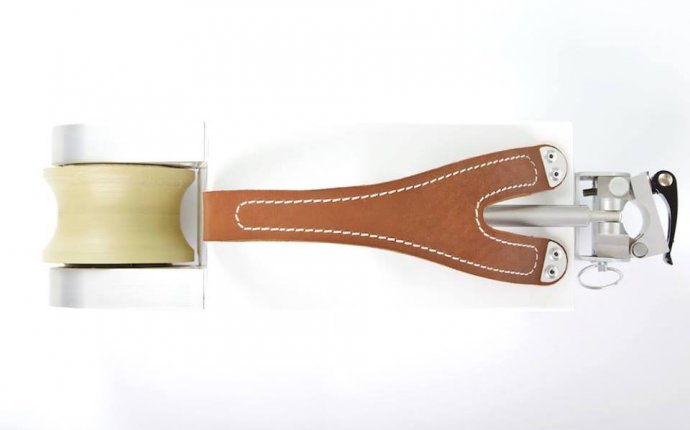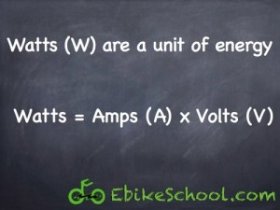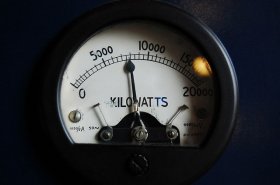
Electric Power for Bicycles
 This is perhaps one of the most often asked questions I get from people looking to build or buy their first ebike. There are many different electric bicycle power ratings out there which can be confusing to a beginner.
This is perhaps one of the most often asked questions I get from people looking to build or buy their first ebike. There are many different electric bicycle power ratings out there which can be confusing to a beginner.
250 watt, 500 watt, 1, 000 watt, 36V, 48V….. what does it all mean?!
Well the first thing to know is that not all electric bicycles are created equally. Even two ebikes that both claim to be the same power or ‘wattage’ level can actually be fairly different ‘under the hood’. I’ve written specifically about the myth of the ebike wattage, but I’ll cover it briefly here.
Generally speaking, the higher the wattage, the higher your electric bicycle power will be. However, many ebikes are labeled differently than their actual power level, whether it be for marketing gimmicks, to sneak higher powered ebikes past laws and regulations, or a whole host of other reasons. You’ll want to check with the manufacturer to determine the actual wattage of an electric bicycle, which will come down to two numbers: the voltage of the battery multiplied by the peak current limit (in amps) of the controller.
A common electric bicycle setup is a 36V (volt) battery and a 15A (amp) controller. Wattage is just voltage multiplied by current, so 36 volts x 15 amps = 540 watts. In this case, we are looking at an ebike of approximately 500 watts. Do the math just like this on any electric bicycle to determine just how much power that specific ebike is capable of delivering.
 How much ebike power do you actually need? The answer will mostly depend on two factors: your weight and whether you will be riding up many decent-sized hills. The heavier you are, the more power you need to accelerate the ebike. The steeper and longer the hill you are trying to climb, the more power you need to get up the hill.
How much ebike power do you actually need? The answer will mostly depend on two factors: your weight and whether you will be riding up many decent-sized hills. The heavier you are, the more power you need to accelerate the ebike. The steeper and longer the hill you are trying to climb, the more power you need to get up the hill.
My wife, for example, is quite comfortable on her 24V, 250 watt ebike. This is a very low powered electric bicycle, but she only weighs about 110 lbs (50 kg) and we live in a flat city, so she doesn’t have to worry about hills. If we lived in a hilly area, she’d likely need closer to 350-400 watts of power, which could better be achieved by an ebike with a 36V battery. An electric bicycle with a 36V battery and 12A controller would output a peak power of 432 watts (36V x 12A = 432W) which would be plenty to scoot her up a decent sized hill.
I weigh about 150 lbs (68 kg) and my wife’s 250 watt electric bicycle feels a bit sluggish to me. A 500 watt ebike, such as an ebike with a 36V battery and 15A controller would be about the minimum comfortable level for me, assuming I’m on flat ground.
Of course, I enjoy a sportier, faster accelerating ebike so I ride an ebike with a 48V battery and 20A controller, giving me about 1, 000 watts of power to my direct drive hub motor. That’s more than I need at my weight in a flat city, but if I lived in a really hilly city, that would be a quite appropriate power level. As it stands, in my flat terrain city, 1, 000W leaves me some wiggle room for strong accelerations and occasionally towing a bicycle trailer, though I generally don’t use anywhere near 1, 000W for my daily driving needs.
As it stands, in my flat terrain city, 1, 000W leaves me some wiggle room for strong accelerations and occasionally towing a bicycle trailer, though I generally don’t use anywhere near 1, 000W for my daily driving needs.
Power requirements go up quickly for folks weighing over 220 lbs (100 kg). In a flat area, a 750 watt ebike should be plenty, though acceleration will be notably slower. In a hilly area, a 1, 000 watt ebike would be the minimum. Heavy riders climbing serious hills might even have to push past a 20A controller to 25A or 30A combined with a 48V battery to get 1250-1500 watts of power, depending on the specifics of their weight and terrain. Once you start getting above a 1, 000W electric bicycle, over heating issues can start to come into play on especially long uphill rides.
The best way to know for sure what electric bicycle power level you need is to do a test ride on a few ebikes of different power levels and determine what feels best. On flat ground an underpowered ebike won’t really be too much of an issue; it will simply result in sluggish performance. Trying to ride an underpowered ebike up a steep hill, especially with a heavy rider, can risk causing damage to the ebike by burning out the motor or connectors. If you feel like your power is disappearing as you ride up a hill, that’s a sign the ebike is working too hard you need a higher power setup.
Lastly, think about cargo. A loaded backpack shouldn’t be an issue, but if you want to carry child seats or pull a trailer, consider bumping up to the next higher power level to ensure you have the power you need when it counts. I personally like to err on the higher power ebike side. If you don’t use the extra power all the time, that’s fine of course. But when you really need it, you’ll be happy that extra power is there.









